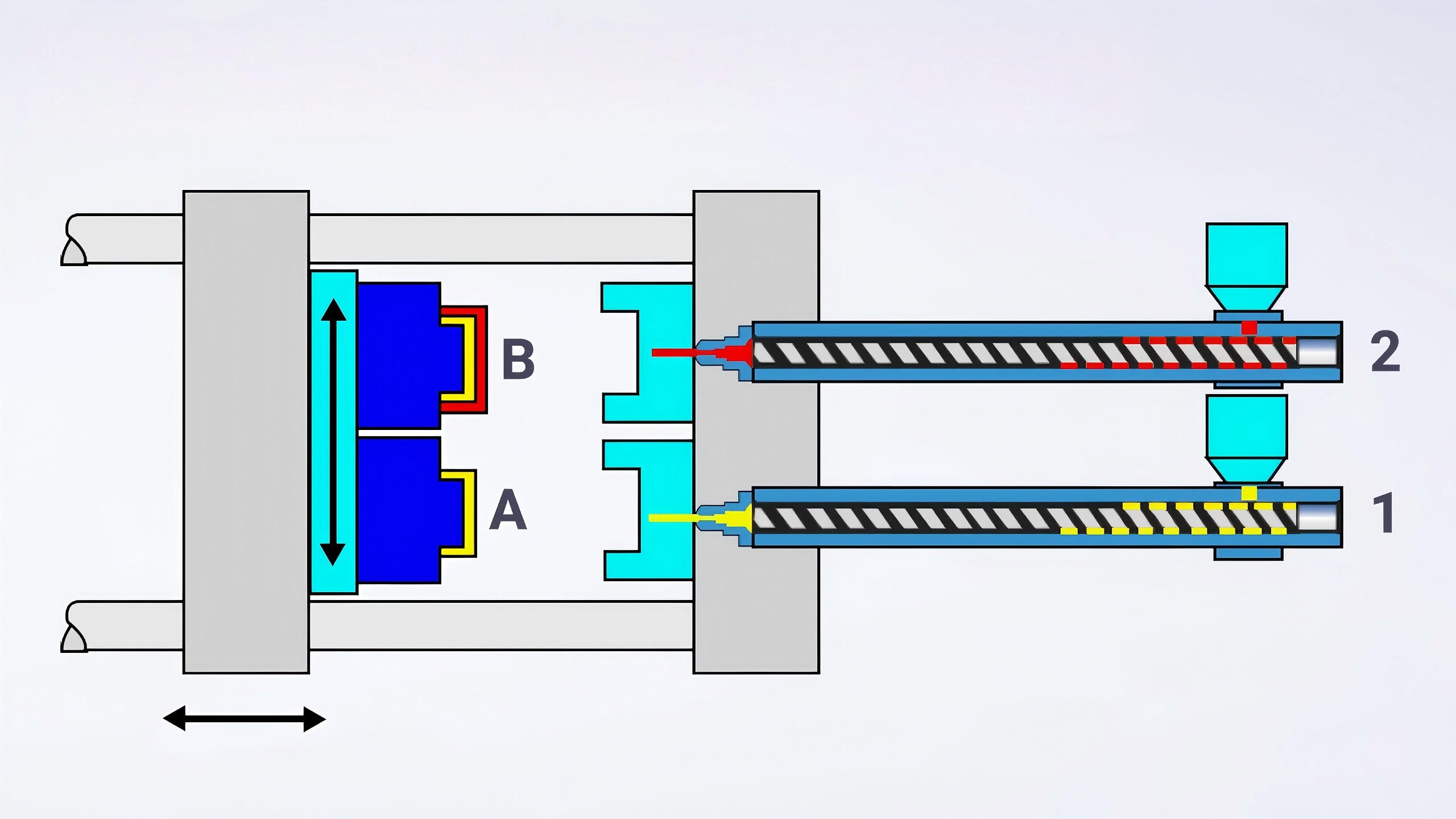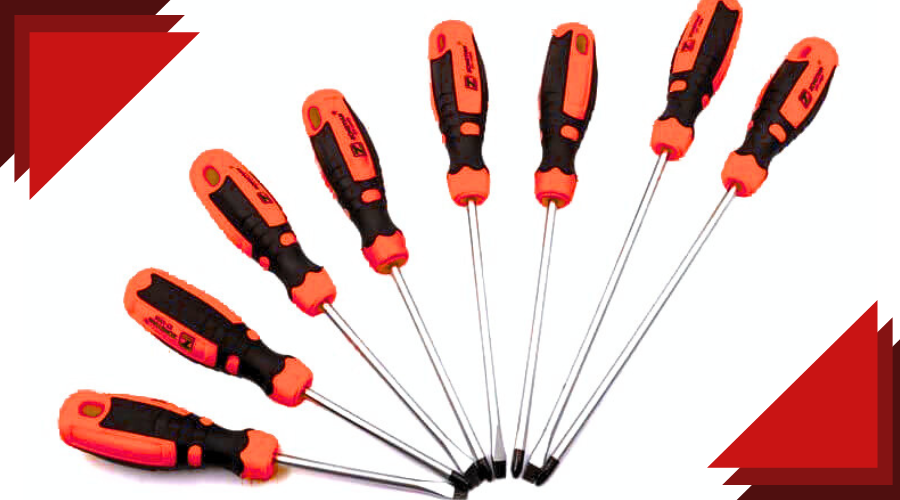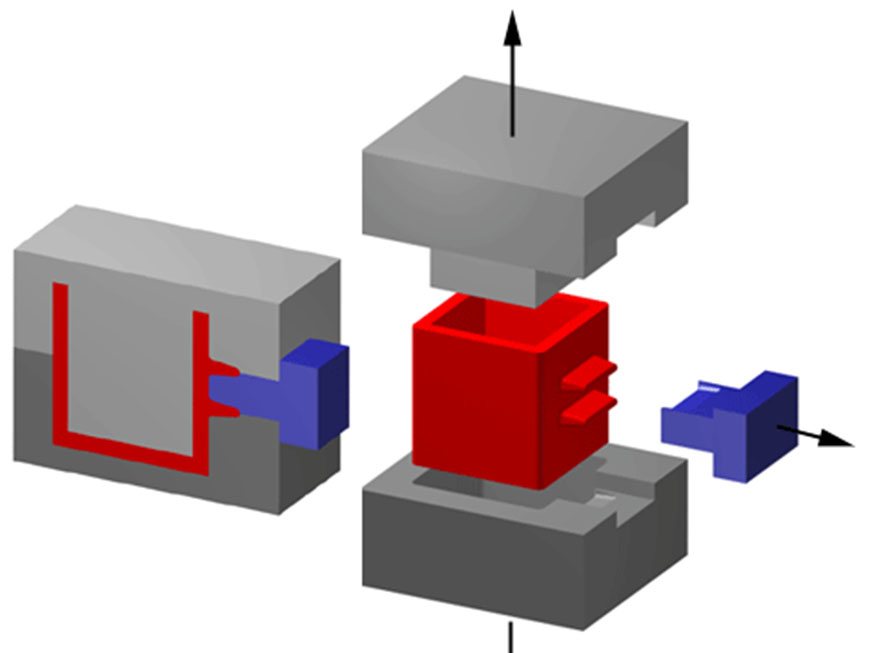
Johnny Xiong
Rapid Tooling Expert
Contents
The manufacturing of plastic components has evolved significantly over the past few decades, driven by market demands for higher functionality, improved aesthetics, and reduced production costs. Traditional single-material injection molding is often insufficient to meet modern requirements where products must combine multiple properties such as rigidity, flexibility, softness, and visual appeal in a single part. This has led to the rise of multi-material and two-color injection molding technologies, which allow manufacturers to integrate multiple materials or colors into a single component in a streamlined process.
Multi-material and two-color injection molding not only enhance product design and performance but also reduce assembly steps, improve durability, and open new possibilities for ergonomics and brand differentiation. This article presents an in-depth analysis of these technologies, exploring their principles, benefits, limitations, applications, and best practices for implementation.

1. Fundamentals of Multi-Material and Two-Color Injection Molding
Multi-Material Injection Molding
Multi-material injection molding involves the use of two or more distinct polymer materials in a single molded part. Each material contributes its unique characteristics, such as hardness, elasticity, or color, to different areas of the part. The process generally relies on sequential or simultaneous injection of multiple materials into the same mold, often utilizing advanced mold mechanisms to allow precise placement and bonding.
Materials used in multi-material molding can range from rigid thermoplastics to soft elastomers. By combining these materials, manufacturers can create products with structural integrity in one region and enhanced grip or cushioning in another. Multi-material molding is particularly valuable for products that require varying mechanical properties in a single component.
Two-Color Injection Molding
Two-color injection molding, sometimes referred to as two-shot molding, is a subset of multi-material molding that specifically involves injecting two distinct colors of the same or different polymers into a mold. The process typically employs a specialized machine with two injection units, which inject materials sequentially or simultaneously.
The steps of a two-color molding process include:
Injection of the first material into part of the mold to form the base structure.
Repositioning of the mold (rotation, sliding, or transfer).
Injection of the second material into the remaining cavity or over the first material.
This method allows manufacturers to achieve visually appealing products with multiple colors, textured finishes, and functional enhancements in a single production cycle.
2. Technical Principles
Mold Design and Machine Configuration
The mold is the core of multi-material and two-color injection molding. Unlike conventional single-material molds, these molds often include multiple cavities, sliding cores, or rotary platens to allow sequential injection and precise placement of materials. Proper mold design ensures that the interface between materials is mechanically and chemically robust, preventing delamination or weak bonding.
Injection molding machines for multi-material processes are equipped with two or more injection units, each capable of independently controlling temperature, pressure, and injection speed. This allows accurate placement of different materials and ensures uniform bonding at the interface. The synchronization of injection sequences, cooling rates, and mold movements is critical for achieving high-quality parts.
Material Selection
Selecting compatible materials is essential. Factors to consider include:
Melting temperature: Materials must have similar processing temperatures to avoid degradation or poor bonding.
Shrinkage and thermal expansion: Differences can lead to warping or separation.
Rheological properties: Flow behavior affects mold filling and interface adhesion.
Chemical compatibility: Some polymer pairs do not bond well, requiring surface treatments or adhesives.
Materials are chosen based on the functional requirements of the part. For example, a rigid polymer can provide structural support, while a soft elastomer can enhance grip or provide sealing capabilities. Proper material selection ensures product durability, performance, and aesthetic appeal.
3. Advantages of Multi-Material and Two-Color Injection Molding
Functional Integration
By combining materials with different properties, manufacturers can integrate multiple functions into a single component. Examples include:
A rigid base with a soft-touch surface for ergonomic grips.
Overmolded seals on a rigid housing to prevent leaks.
Living hinges created from flexible polymers over a rigid structure.
Functional integration reduces the need for assembly and additional fasteners, leading to simplified manufacturing and improved product performance.
Enhanced Aesthetics
Two-color molding allows the creation of visually appealing products with multiple colors or textures without requiring post-processing like painting or labeling. This method can highlight brand logos, color-coded features, or functional areas, enhancing the overall user experience. The integrated color or texture is more durable and resistant to wear, fading, and chipping compared to secondary finishing methods.
Cost and Time Efficiency
Although the initial investment in specialized molds and machines is higher, multi-material and two-color molding can reduce overall production costs by:
Minimizing assembly labor.
Reducing the number of components.
Eliminating secondary finishing operations such as painting or printing.
For high-volume production, these cost savings can be substantial, offsetting the initial investment and improving overall efficiency.
Strength and Durability
When executed correctly, the bonding between different materials can be very strong, sometimes at a molecular level. Multi-material parts can therefore offer superior mechanical performance compared to mechanically assembled components. For instance, a combination of rigid and soft materials can provide both structural strength and impact absorption.
Sustainability Benefits
By integrating multiple materials into a single part, manufacturers reduce material waste associated with secondary assembly and finishing processes. Fewer assembly steps also lead to lower energy consumption and decreased handling errors, contributing to leaner and more sustainable manufacturing practices.
4. Challenges and Limitations
High Initial Investment
Molds for multi-material or two-color molding are complex, often featuring multiple cavities, sliding cores, or rotating mechanisms. These molds can be significantly more expensive than conventional molds. Injection molding machines with multiple units and precise control systems also require higher upfront investment.
Material Compatibility
Not all materials can be successfully combined. Differences in melting points, flow properties, and chemical compatibility can result in weak bonding, delamination, or warping. Material testing and simulation are critical to ensure proper adhesion and part performance.
Extended Cycle Times
Sequential injection and cooling cycles often result in longer cycle times compared to traditional single-material molding. In high-volume production scenarios, this can reduce overall throughput and must be considered when evaluating cost efficiency.
Design Constraints
Certain geometries may be difficult to mold with multiple materials, such as parts with complex undercuts or intricate internal features. Interface areas between materials must be carefully designed to ensure proper flow and bonding. Additionally, changes to the design after mold production are costly.
Recycling Challenges
Multi-material parts can be difficult to recycle because different polymers are fused together. This can pose challenges in industries focused on sustainability and circular economy principles.

5. Applications
Multi-material and two-color injection molding are widely applied across various industries:
Consumer Electronics: Housings, casings, buttons, and trim where soft-touch surfaces and color differentiation are desired.
Automotive: Interior parts such as dashboards, grips, and trim panels combining rigidity and softness for user comfort.
Medical Devices: Components that require both structural integrity and ergonomic or sealed surfaces.
Hand Tools: Tool handles combining hard structural elements with soft, ergonomic grips.
Home Appliances: Control panels, buttons, and housing shells requiring integrated colors and textures.
Toys and Consumer Goods: Multi-color and soft-touch areas enhance functionality and aesthetic appeal.
These applications demonstrate the versatility and value of multi-material and two-color molding in delivering high-performance, visually appealing, and ergonomic products.
6. Best Practices
Early Design Considerations
Involving engineers early in the design process ensures that part geometry, material selection, gating, and inter-material interfaces are optimized for multi-material molding. Early design for manufacturing (DfM) analysis reduces the risk of defects and ensures efficient production.
Material Testing
Conduct compatibility tests to verify that the selected materials bond effectively and meet the mechanical and thermal requirements. Simulation tools can predict flow behavior, cooling rates, and interface quality before mold production.
Precision Mold Fabrication
High-precision molds are essential for proper alignment and consistent bonding. Regular maintenance ensures that molds remain accurate over long production runs.
Process Control
Careful control of injection pressure, temperature, shot sequence, and cooling time is critical. Deviations can lead to defects such as voids, warpage, or incomplete bonding.
Volume and ROI Evaluation
Due to the high upfront costs, multi-material molding is most cost-effective for medium-to-large production volumes. Manufacturers should evaluate the return on investment based on expected production quantity and part complexity.
Sustainability Planning
Consider material selection and end-of-life recycling during the design phase. Choosing compatible recyclable materials or designing for disassembly can improve environmental performance despite the inherent complexity of multi-material parts.
7. Future Trends
The evolution of multi-material and two-color injection molding is influenced by advances in materials, machine technology, and sustainability requirements:
Material Innovation: Development of new polymers, bio-based plastics, and elastomers expands the range of possible combinations.
Digital Simulation: Advanced mold-flow simulation and digital twin technology improve process predictability and reduce trial-and-error in mold design.
Sustainable Manufacturing: Focus on recyclable multi-material components and reduced material waste.
Customization and Small-Batch Production: Modular molds and flexible machines enable cost-effective production of customized or low-volume parts.
Integration with Insert Molding: Combining plastics with metal inserts or electronic components adds functionality and reduces assembly steps.
These trends suggest that multi-material and two-color injection molding will continue to expand in scope, enabling higher-performance, more aesthetically sophisticated, and sustainable products.
Conclusion
Multi-material and two-color injection molding technologies provide manufacturers with powerful tools to enhance product functionality, aesthetics, and production efficiency. By combining different materials or colors in a single component, manufacturers can integrate multiple functions, improve ergonomics, and reduce assembly steps. The resulting parts are often stronger, more durable, and more visually appealing than their single-material counterparts.
Despite the advantages, successful implementation requires careful material selection, precise mold design, and stringent process control. High initial investments and longer cycle times must be justified by production volume or product value. When applied strategically, these technologies offer significant competitive advantages and open new possibilities for innovative product design.
Multi-material and two-color injection molding are increasingly important for industries such as consumer electronics, automotive, medical devices, and consumer goods. As materials, machines, and simulation technologies continue to advance, these processes will become more efficient, flexible, and sustainable, allowing manufacturers to meet the growing demands of modern markets.
About HordRT
HordRT is a leading company specializing in advanced manufacturing solutions, including multi-material and two-color injection molding. With expertise in mold design, material selection, and process optimization, HordRT partners with clients to deliver high-quality, integrated plastic components that balance functionality, aesthetics, and production efficiency.
Whether you are looking to improve product performance, enhance design aesthetics, or streamline your manufacturing process, HordRT has the solutions and expertise you need. Contact us today to learn how we can help bring your multi-material or two-color injection molding projects to life!
-q4gvl4k29y4hq8j9rjpapvj0ft06fje63olt7p210i.png)

